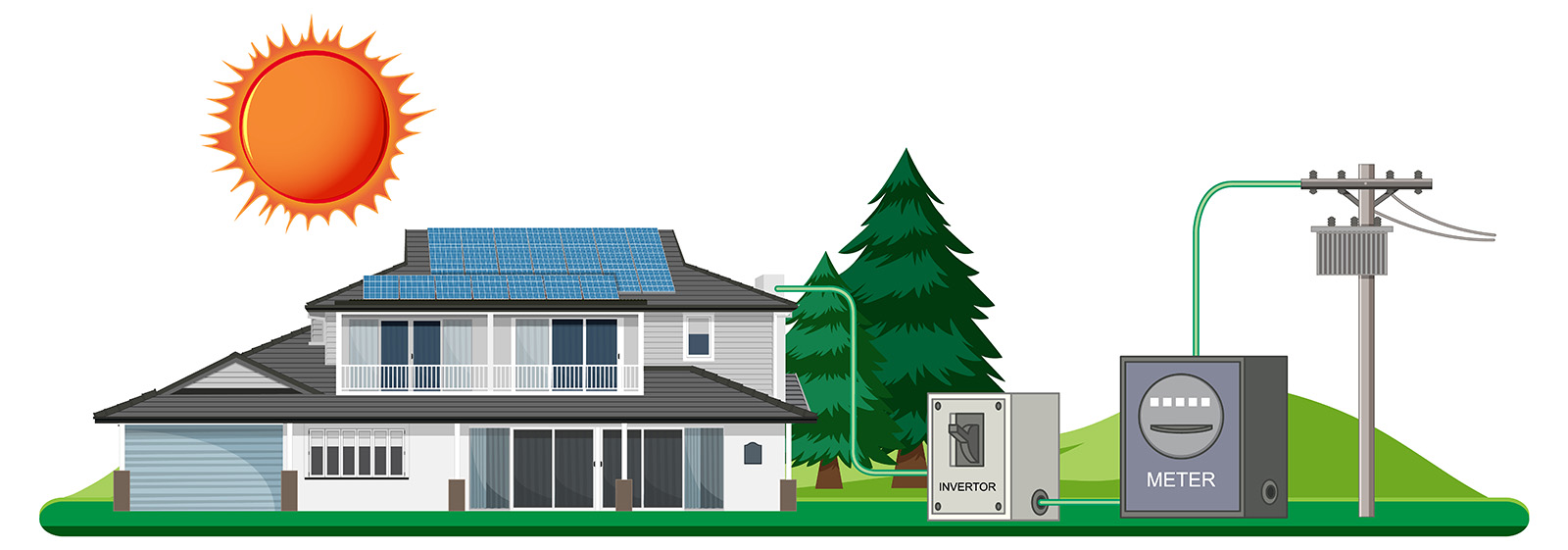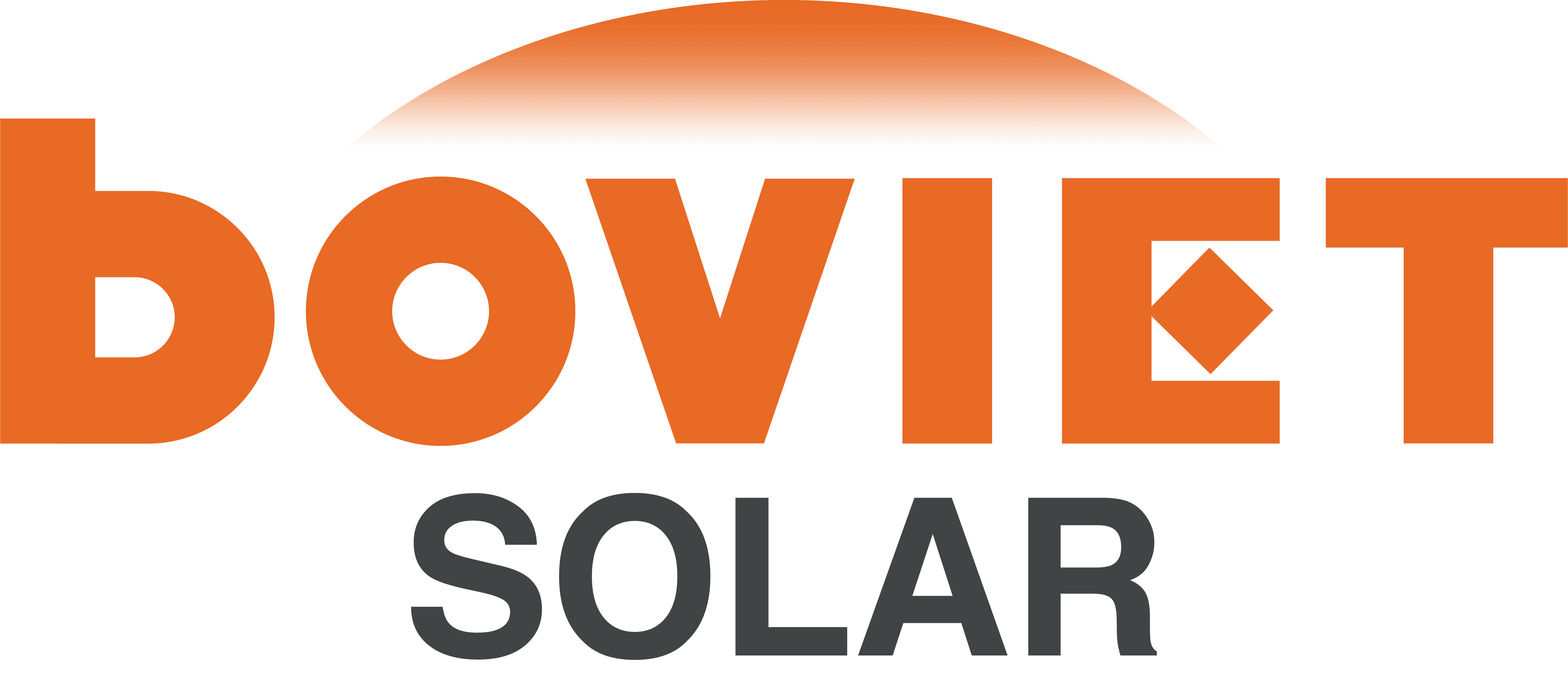
SOLAR ENERGY | Sustainable
Solar energy harnessed from the sun’s rays holds immense potential to meet our energy needs sustainably and efficiently. Each hour, the sun emits more energy than the entire planet consumes in a year, highlighting its vast abundance as a renewable resource. This energy can be captured through solar panels (photovoltaics), which convert sunlight directly into electricity, or through solar thermal systems, which capture heat for various applications, such as heating water or spaces.
The decentralized nature of solar energy allows individual homes, businesses, and farms to generate their own power, reducing reliance on centralized fossil fuel sources and enhancing energy security. This local production not only lowers electricity bills but also empowers communities to take control of their energy consumption and contribute to a more resilient energy system. Additionally, large-scale solar farms play a crucial role in supplying clean electricity to the energy grid, providing significant amounts of renewable power to thousands of homes and businesses.
By integrating solar energy into our daily lives and infrastructure, we can significantly reduce greenhouse gas emissions, combat climate change, and promote sustainable development. As technology continues to advance, solar power becomes increasingly efficient and affordable, making it accessible to a broader audience. Investing in solar technologies is not just an environmental imperative; it is an opportunity to create a cleaner, more sustainable energy future that benefits both people and the planet, paving the way for a healthier environment for generations to come.
HISTORY OF SOLAR ENERGY
The history of solar energy dates back thousands of years, with ancient civilizations like the Greeks and Romans utilizing sunlight for warmth and illumination. The modern era of solar energy began in the 19th century, when French physicist Alexandre Edmond Becquerel discovered the photovoltaic effect in 1839. This led to the creation of the first practical solar cell by Bell Labs in 1954, achieving about 6% efficiency.
The 1970 s energy crisis reignited interest in solar power, prompting increased government investment in research and development. By the 1990 s, solar energy began gaining traction in residential and commercial sectors. In the 21st century, technological advancements and falling prices have fueled exponential growth in solar adoption worldwide, supported by policies promoting renewable energy. Today, solar energy is one of the fastest-growing renewable sectors, playing a vital role in reducing carbon emissions and facilitating the transition to a sustainable energy future.



HOW SOLAR SYSTEMS WORK
Solar panels generate electricity by converting sunlight into electrical energy through the photovoltaic effect. Composed of photovoltaic (PV) cells, usually made of silicon, these panels absorb sunlight, which energizes electrons and creates electron-hole pairs. The structure of the cells establishes an electric field that directs the flow of free electrons, generating direct current (DC) electricity. An inverter then converts this DC electricity into alternating current (AC) for use in homes and businesses. Excess electricity can be fed back into the grid, allowing homeowners to earn credits through net metering. This process provides a clean, renewable source of energy, reducing reliance on fossil fuels and lowering greenhouse gas emissions.
- Photovoltaic Cells: Solar panels are made up of many photovoltaic (PV) cells, typically made from silicon. These cells absorb sunlight and generate electric currents.
- Absorption of Sunlight: When sunlight strikes the surface of a PV cell, it energizes electrons in the silicon material, creating electron-hole pairs.
- Electric Field Creation: The PV cells are designed with a positive layer (p-type) and a negative layer (n-type). This structure creates an electric field that directs the movement of free electrons toward the conductive metal plates on the sides of the cell.
- Electric Current Generation: As electrons flow through the circuit created by the conductive plates, they generate direct current (DC) electricity.
- Inverter Conversion: Since most home appliances and the power grid use alternating current (AC), an inverter converts the DC electricity generated by the solar panels into AC electricity.
- Usage and Storage: The AC electricity can then be used to power your home, sent back to the grid, or stored in batteries for later use.
- Net Metering: If more electricity is generated than used, excess energy can be fed back into the grid, often earning credits for the homeowner through net metering policies.

BENEFITS OF SOLAR ENERGY
Solar energy is increasingly recognized as a crucial solution for addressing the world’s energy needs due to several compelling reasons. First and foremost, it is a renewable resource, meaning it is abundant and inexhaustible if the sun shines. This reduces dependence on fossil fuels, which are finite and contribute significantly to environmental degradation.
- Environmental Impact: Solar energy significantly reduces greenhouse gas emissions and reliance on fossil fuels, helping to combat climate change and improve air quality.
- Cost Savings: Once installed, solar panels can lead to substantial savings on electricity bills. Many systems pay for themselves over time through energy savings and incentives.
- Energy Independence: Solar energy enables individuals and communities to generate their own power, reducing dependence on external energy sources and enhancing energy security.
- Job Creation: The solar industry creates numerous jobs in manufacturing, installation, and maintenance, contributing to local economies and workforce development.
- Low Operating Costs: Solar energy systems generally require minimal maintenance and have long lifespans, leading to low operating costs over time.
- Technological Advancements: Ongoing innovations in solar technology continue to improve efficiency and affordability, making solar energy more accessible to a broader audience.
- Versatility: Solar energy can be used for a variety of applications, including residential, commercial, industrial, and utility-scale projects, as well as off-grid solutions for remote areas.
- Increased Property Value: Homes with solar energy systems often see an increase in property value, making them more attractive to buyers.
- Government Incentives: Many governments offer tax credits, rebates, and other incentives to encourage solar energy adoption, further reducing installation costs.
- Sustainable Development: By promoting renewable energy sources like solar, we can support sustainable development goals and work towards a cleaner, more resilient energy future.

